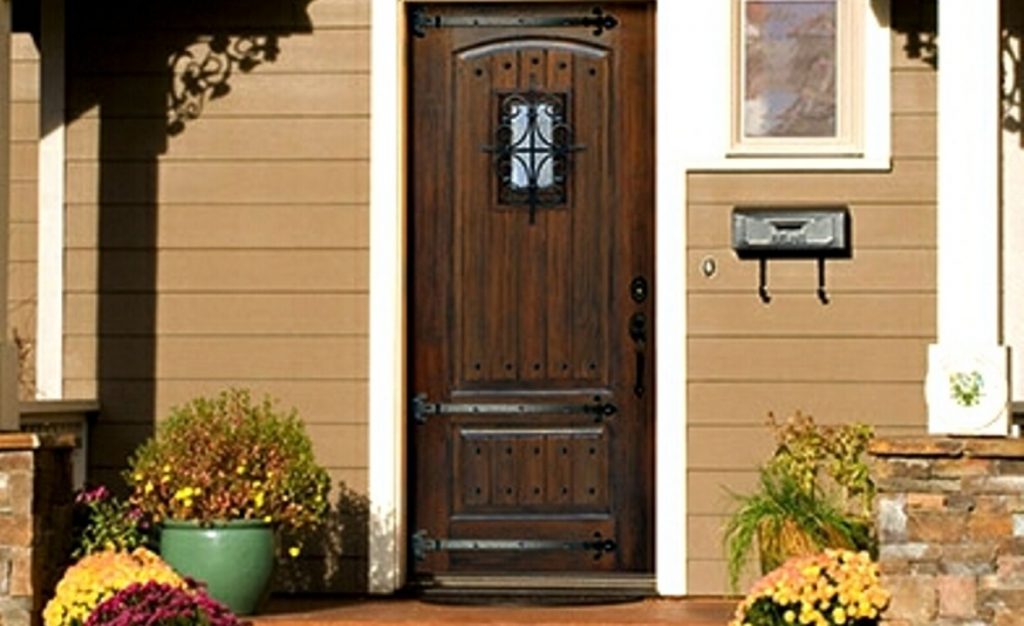Your front door is where you welcome visitors and go in and out throughout the day. When your door is damaged due to a break-in, weather, or normal wear and tear, there are a few key reasons why you should make front door repair a priority:
- Safety—A damaged front door makes your home more vulnerable to attempted break-ins and unwanted visitors. When you have us do the front door repair work, we respond quickly so you can rest easy your home won’t remain at-risk for very long.
- Appearance—The way your front door looks heavily impacts your home’s curb appeal, especially if you’re trying to sell. Get that door repair taken care of and enjoy having a front door that enhances the way your home looks from the outside. Know that in some cases, a front door needs to be replaced, and when that happens, we can do the job.
- Comfort—A damaged front door lets in drafts, moisture, and wind, which can harm your ability to keep your home at a comfortable temperature while making your HVAC system work harder than it has to. Door repair keeps cool and warm air where it should be, so you can continue to enjoy a comfortable, safe space to live.
- Peace of Mind—Getting your front door fixed has probably been on your mind for a while. If you haven’t called us yet for door repair, do it today and gain the peace of mind that comes from knowing your home is safe, secure, and comfortable.
Entry doors have to withstand outdoor elements of rain, wind and changing temperatures, as well as the wear and tear of everyday life. They are stronger than interior doors, with impact-resistant materials and are finished to withstand the elements. Eventually a door dents or weatherstripping needs to be replaced. Below are some of the more common adjustments that you may need to make on your entry door. Keep in mind the material; you may need to take precautions for exotic woods versus manufactured products.
Maintaining and Front Door Repair
Over time you may notice that your entry door sticks, creaks or does not close as easily as it did when it was first installed. Because a house is usually constructed from organic material, it is susceptible to wear and tear. In addition, wood expands and contracts through changing weather. Therefore, after your house has “settled” you may need to make simple adjustments to make sure your entry door is still plumb in the doorway and can easily open and shut. In addition to the natural changes that occur with an aging house, there are other factors that may make it necessary to spend time repairing your entry door. If your house sees a lot of foot traffic, your door is more likely to suffer from damage due to use.
Repairing a Sticking Entry Door
If your door is sticking, you may need to adjust the size of the door to fit the entryway. It may be as easy as cleaning all of the hinges and removing any buildup of dirt along the door edges. The next step is to see if adjusting the hinges will alleviate the problem. Try tightening them. If the door continues to stick, try sanding the edges of the door.
Repairing Dents
Dents in entry doors can be repaired. If you have a steel door, you may be able to repair it using an auto filler. You will need to sand down the damaged area until you see the metal. The auto filler is then applied in layers until the door is smooth. This requires some sanding. When you have achieved a smooth surface, you can prime the area and paint it.Squeaky Hinges
If your door makes a squeak every time you open and shut it, you may need to lubricate your hinges with silicone. Remove the pin and lightly scrub the pin, barrel and hinge leaves with steel wool. Then coat with a thin layer of silicone spray or a light penetrating oil.
Stopping Air Leaks
If you notice a cold draft around your entry door during the winter months, your door may need to be sealed. A few simple DIY tasks can help reduce your energy bills and keep your home a steady temperature. Check the caulk around the door, and replace it if it shows any damage or gaps. Weatherstripping is another option for stopping air leaks. Shown here is a weatherboard. Available in a variety of finishes, a weatherboard seals the bottom of the door. The angle of the weatherboard directs rain away from the bottom of the door.
Replacing a Doorway
Remove one hinge screw and drive a 3-inch screw into the framing to hold the door in place. Do not overdrive the screw, because you will move the door frame.



